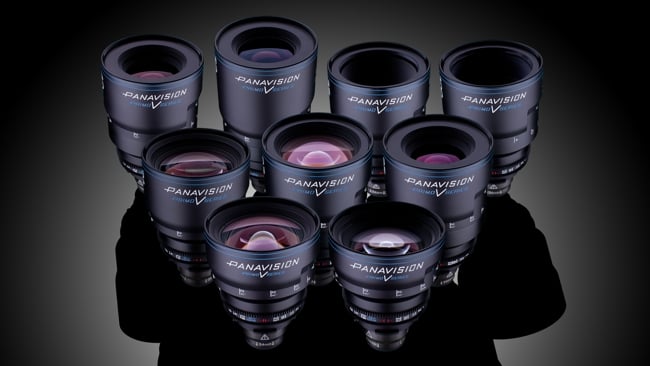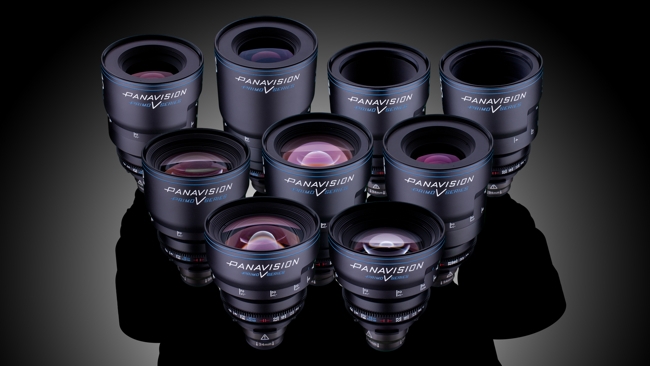
 Primo V Group 3 Mirror
Primo V Group 3 Mirror
The market is hotting up for high quality cinema-type lenses. Some of the big names are breaking with tradition and focusing on large-sensor cameras
As we discussed in my post-IBC writeup on Samyang's V-DSLR series, lens availability is a problem. Now the world has a lot of cheap, big-chip video cameras, it's no surprise to see a lot of people producing lenses to suit, at all price points.
Panavision, being a purely rental facility and one targeted squarely at the high end, isn't about to help most of us solve this problem. Even so, their new Primo V series, designed specifically for the rigours of digital filmmaking, might help cut out the issues that some older PL primes have had with reflections and other aberration when used on digital cameras. Panavision expressly tell us that the V series is not to be used on film cameras, because they've tweaked the design specifically to compensate for the sorts of problems caused by infra-red and antialiasing filters, the "glass pack" that's inevitably present in all - or effectively all - digital cinematography cameras. They're not image-space telecentric, with parallel rays exiting the rearmost lens element, but they are designed to minimise associated problems in a way Panavision describe as creating an image that's "balanced center-to-edge".
They're not "sterile"
These aren't full-frame lenses for use on DSLRs, in the way that Schneider's FF series are. They're also not the first time that Panavision have produced PL mount lenses. While the company is known for using its own lens mount, even going to the lengths of modifying the Arri cameras in its rental stock to suit, they have produced PL lenses to suit 16mm production before (even though their own Elaine 16mm camera used the PV mount). What's perhaps more interesting is that Panavision talks extensively about creating lenses that don't produce excessively sharp or sterile images. This is the sort of line taken by people like Cooke, whereas Zeiss prefer to produce something which has no discernible effect on the pictures, and let the user filter to taste. Given the fact that digital acquisition is often criticised for being a bit characterless, this is probably a good idea, especially as they'll only ever be rented and people can therefore choose exactly when it's desirable or not.
The look of a big Hollywood movie
To kids of the 80s (that's me) the look of a big Hollywood movie is more or less defined by the Panavision C and E series, which are among those anamorphic lenses which produce a pronounced blue tint to their horizontal flares, although less so on the E. Since then, Panavision lenses have - perhaps fairly, perhaps not - had a reputation for flaring readily, perhaps on the assumption that they're principally used on very upscale productions where there will be sufficient equipment and people to flag off all those pesky point sources. This is supposed to be much less true on the Primo series, however, and this newly-announced range is part of that series. So, having veered dangerously close to commenting on the performance of lenses nobody's used yet, I'll reserve further judgement.
And a personal plea: the reason I mention all this is that it would, of course, be absolutely wonderful to see some more 1.33:1 anamorphics in the world, both so we can shoot cinemascope-shaped frames on 16:9 cameras, and and so we can get C-series flares out of them. The existence of the V series suggests that Panavision might conceivably be interested in servicing this market, and it's easy to get the impression that the only reason anyone shoots anamorphics is so there's blue lines everywhere.
Cooke's modern anamorphic series doesn't really do it in the same way that the C series does, and 1.33:1 lenses do it less than 2:1 lenses, so, if anyone's going to do it, I know who I'd like to see try. And okay, fine, we'd end up with Year of the Anamorphic Flare on youtube, just as we're struggling out of Year of High Speed, provoked by the FS700. But it'd be worth it.
The new Panavision series includes 14.5, 17.5, 21, 27, 35, 40, 50, 75, and 100mm lenses at a speedy T1.9. Close focus on all is 24 inches and weight is between 3.4 and 6.4lbs.
Tags: Technology



Comments